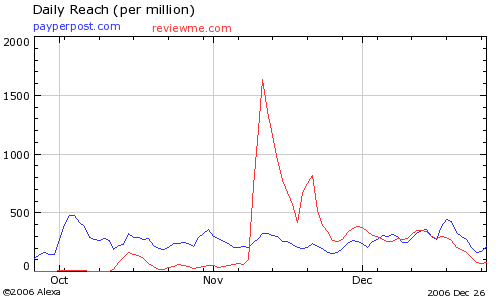Here is a list of things you can do if you want to annoy people, get blacklisted, or even arrested for your online marketing efforts. Webmasters often use these techniques thinking they are harmless, but there is a cost – these technique do cost people real time and money.
Imagine if you developed a robot that would go into a Starbucks every day and steal 4 packets of sugar. No big deal right? Who would miss, or even complain, about 4 packets of sugar? But now let’s pretend you had a thousand of these robots and sent them each into a Starbucks every hour. That’s 96,000 sugar packets a day or 35,040,000 packets of sugar a year. Starbucks is going to have something to say about that.
It’s the same with automated spamming techniques, a single piece of spam may not seem like a big deal – it’s just a little bandwidth, or CPU usage or disk space that’s used, but add it all up and you are doing some real damage. Even more damaging is the amount of time that people spend deleting and fighting spam.
Here are some of the common spam techniques, along with the reasons they work and how it causes damage.
1. Email Spam
This is the original spamming technique. Marketers send out mass, unsolicited emails.
Why it works
It’s a number game. If you send out 100 million emails, even if you get a .0001% response rate, you get ten thousand responses.
Why is this bad?
People spend countless hours deleting spam and setting up and configuring spam blocking systems. Spam counts for a huge percentage of all email and clutters mailboxes and wastes huge amount of disk space. I can’t even imagine all the CPU time consumed trying to filter all this junk.
2. Guest Book Spam
This is one of the original spammy SEO techniques. In the dark ages of the web, people would set up guest books where visitors could say “hi” and leave a little message. Spammers quickly found out that they could set up bots that create messages with links back to their own site.
Why it Works
Search engines use the number of backlinks to a site as one of the indicators of a good site. This technique abuses that indicator.
Why Is This Bad?
People spend a lot of time trying to clean up guest books. Disk space and bandwidth is also wasted with these spam messages.
3. Referrer Spam
These spammers send there bots to as many sites as they can, and set the referrer URL to the website address the spammer is trying to advertise. Some sites have publicly accessible web statistics, so these URLs end up on web pages.
Why it Works
Search engines that find these links from the publicly accessible web statistic pages may count them as a vote for the site being pointed at.
Why Is This Bad?
Bandwidth is wasted when the bots visit the site. A lot of time is spent by Webmasters trying to figure out who that particular link ended up in his referrer list.
4. Web Spam
Unscrupulous Webmasters create web sites that full of bogus content that attract search engine spiders, but are of no use to real use to real users.
Why it Works
Using automation, Webmasters can create thousands or millions of pages of content. This content gets displayed in search engine results for “long tail” key phrases where users are looking for very specific queries. Again it’s a numbers game, get enough of the long tail hits and you can get some good traffic. Contextual ads, such as AdSense, are put on the pages to monetize them.
Why Is This Bad?
Search engines indexes become polluted with content that is useless to users, making the entire web experience poorer for all users.
5. Splogs
Short for spam blogs, these are blogs full of automated junk are created.
Why it Works
Much like Web Spam, long tail keywords are a rich source of traffic, but blogs have the added benefit of being indexed quickly in many blog search engine as well as standard Web search engines.
Why Is This Bad?
Many splogs are created on free blog hosting services such as Blogger.com. This wastes the resources of the blog host. It also pollutes blog and regular search engines with lousy content, degrading the overall user experience on the web.
6. Blog Comment Spam
Automated comments are posted to blogs containing a link back to the spammers web site.
Why it Works
Since search engines count links as a vote for a site, this boosts the site’s rankings. Lately the “nofollow” tag has been added to links, but this seems to have done little to stop the flow of comment spam.
Why Is This Bad?
Blog owners spend a lot of time deleting this unwanted junk. People also spend a lot of time trying to set up systems to thwart the spam. Lots of disk space CPU time are wasted on this spam.
7. Forum Spam
Automated programs register as users with forums and then create posts with links back to the spammers web page.
Why it Works
Since search engines count links as a vote for a site, this boosts the site’s rankings.
Why Is This Bad?
Forum owners spend a lot of time deleting this unwanted junk. People also spend a lot of time trying to set up systems to stop the spam. Lots of disk space CPU time are wasted on this spam.
| | Vote for this on SEOyak.com
